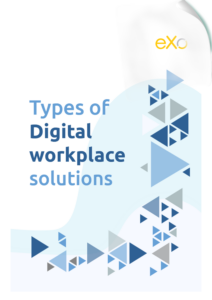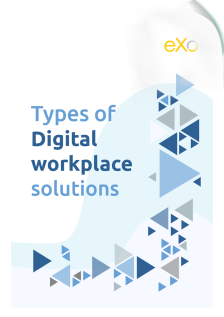


FREE WHITE PAPER
Digital workplace is a buzzword these days. Actually different people use it to mean different things. So what is a digital workplace?

For these reasons, many digital workplace project teams refer to expert consultants to help them define the project’s overall objectives, manage change and generally put all involved stakeholders on the same page. Finally, leveraging agency timesheet software can improve project management by providing a clear overview of team performance and helping ensure that resources are optimally distributed to meet key project milestones.

Types of Digital workplace solutions
Digital workplace is a buzzword these days. Actually different people use it to mean different things. So what is a digital workplace?



You will find here Frequently Asked Questions about digital workplace governance with all the answers in one place.
A digital workplace is a next generation of intranet solutions or intranet 2.0 that is based on three pillars: communication, collaboration and information. In a way this definition is true but it doesn’t cover the whole spectrum of the term. Here are some definitions of digital workplace:
Digital workplace governance refers to the collection of processes, roles, responsibilities and rules that can deliver and shape the digital workplace thus guaranteeing its long term success. It focuses mainly on the what, who and how of a digital workplace project as a whole and the decisions that have to be made along the way.
As mentioned earlier, a robust governance model can make or break a digital workplace initiative as it is primarily designed to cover the whole scope of the project.
A well designed governance model is one that can effectively determine:
Here are 7 tips to build a successful governance framework:
➝ Find out 7 tips to build a successful governance framework
Here are some preliminary steps to build your Digital Workplace Governance:
➝ Find out the preliminary steps to build your Digital Workplace Governance
The digital workplace is the virtual, digital equivalent of the physical workplace. It is a holistic user-centered solution used to connect, engage, and empower employees. Through an employee-centered hub, it encompasses a set of tools, applications, and platforms for a complete work experience.
➝ The success of a digital workplace project depends on a number of factors
( Your e-mail address will not be published)